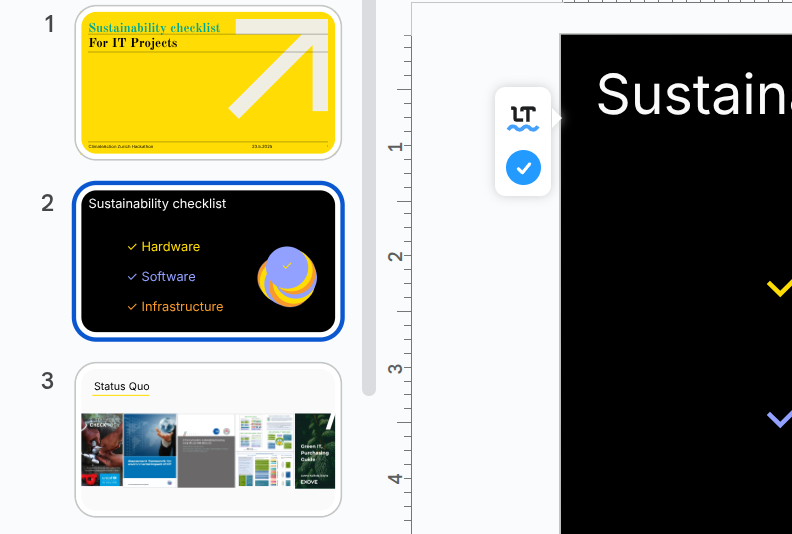A live demo under extreme time pressure is a big accomplishment: well done team! 👏👏👏
Independent coder and open source maintainre, active in the Swiss and global Open Data movement since 2010, participating and organizing in many hackathons and climathons over the years. AI enthusiast, entrepreneur, Könizer. Father of two wonderful children and husband to a brilliant biologist. More in my blog ...
Experience
Dribs
Our mission addressing IT leaders is clear. We've defined the kind of company that we want to address. Read through our provided resources, chose the GREENIT referential, splitting it into 3 teams, clustering actions on feasibility levels visually. We'll vote on the top 10.
Defined archetypes, with which we can prioritize our initial assessment from the Product Leaders handbook. Now building a simple web page, with which users (based on defined personas) can get recommendations, prototyping a web form with typical phases and basic set of questions.
Started working on tool to decide where a DB query goes based on carbon intensity. Dashboard mocked in Google Slides. First step is to choose a source of data. ElectricityMaps is an inspiration for this: forecasts will suggest the time of day for long-running compute jobs.
We have a command-line tool to computes searches of what you are running, the result published to a dashboard. Looking at instrumenting this with Python. The use case: devops pushing code to remote servers. Our goal is to submit at least one bug fix today!
We're kickstarting bsaed on scenarios for a general IT projects, using a Miro board to map out the test cases for sustainability. The use case is a Call for Tender, where sustainability practices are evaluated. Our ELCA internal processes are a reference for the phases involved.
We found a company that did some very unseemly and unsustainable things. We are defining a management plan for addressing the issue in their emergency meeting, identifying emissions, benchmarking it with the tool from Resilio, and recommend steps to implement in mid term.
Our task is improving the design of a website, which tests the footprint of a URL that you enter - based on complexity of the frameworks and amount of requests being sent to the server. We're creating a new design in Canva, adding some new elements to it.
Taking a short break for a discussion with fellow hackathon organizers. For your inspiration: https://greenglam.at/ While doing so I've started a repository based on an open source low carbon web site template: https://github.com/datalets/sustcheck
The team has started a spreadsheet to understand the scope of work, from an initially high-level of project implementation phases.
Uploaded the GREENIT Referentiel in English (PDF, auto-translated with Google)
@rabumaabraham: sorry to hear you're missing out, do stay in touch and hope we can meet at the next ClimateAction event or hackathon!

